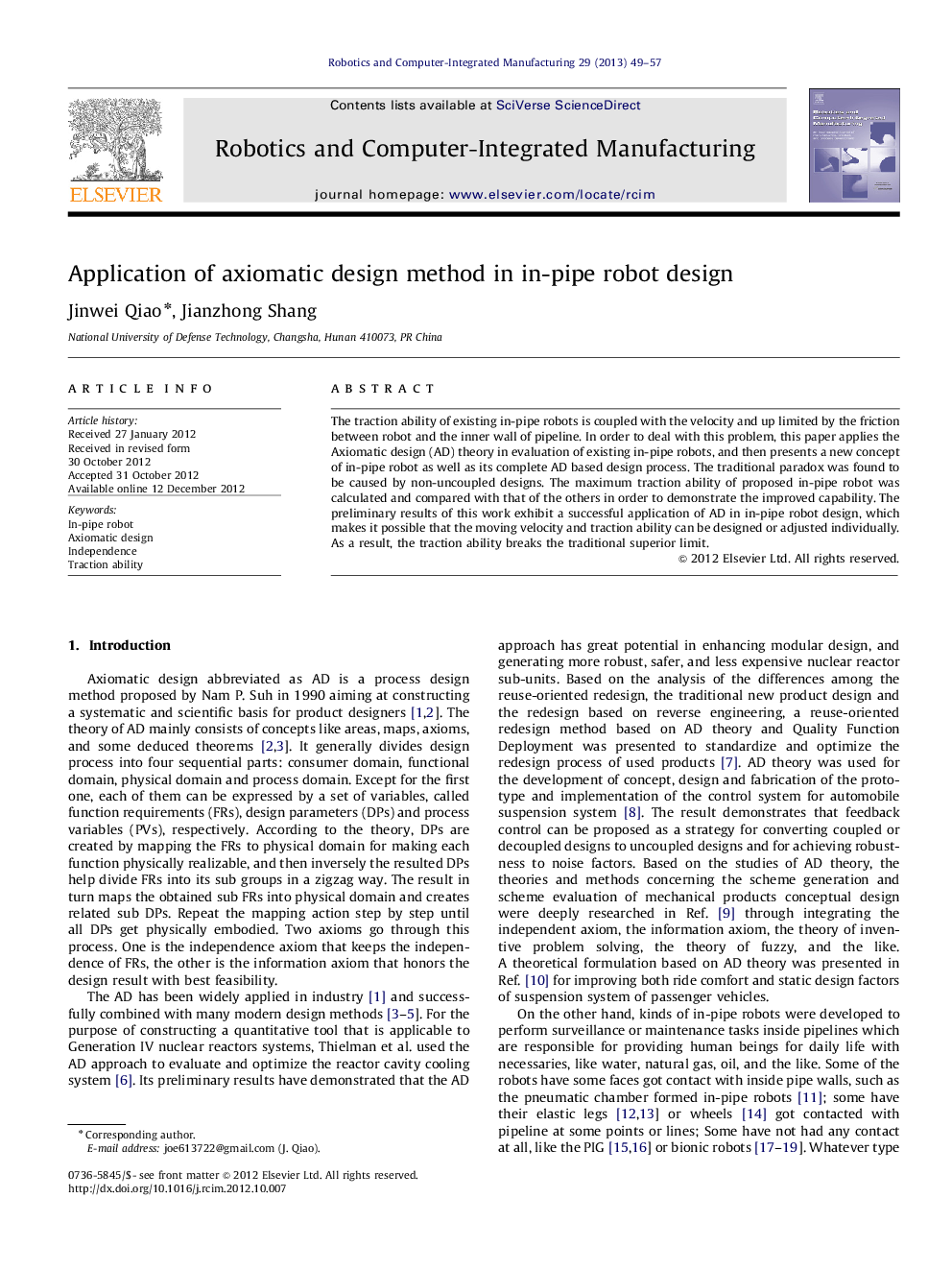| کد مقاله | کد نشریه | سال انتشار | مقاله انگلیسی | نسخه تمام متن |
|---|---|---|---|---|
| 413990 | 680778 | 2013 | 9 صفحه PDF | دانلود رایگان |

The traction ability of existing in-pipe robots is coupled with the velocity and up limited by the friction between robot and the inner wall of pipeline. In order to deal with this problem, this paper applies the Axiomatic design (AD) theory in evaluation of existing in-pipe robots, and then presents a new concept of in-pipe robot as well as its complete AD based design process. The traditional paradox was found to be caused by non-uncoupled designs. The maximum traction ability of proposed in-pipe robot was calculated and compared with that of the others in order to demonstrate the improved capability. The preliminary results of this work exhibit a successful application of AD in in-pipe robot design, which makes it possible that the moving velocity and traction ability can be designed or adjusted individually. As a result, the traction ability breaks the traditional superior limit.
► Axiomatic design (AD) is applied in the design of in-pipe robot for the first time.
► Existing in-pipe robots are found to be designed either coupled or decoupled.
► Uncoupled design of proposed in-pipe robot greatly increases its traction ability.
► Its velocity and traction ability can be designed and adjusted individually.
Journal: Robotics and Computer-Integrated Manufacturing - Volume 29, Issue 4, August 2013, Pages 49–57